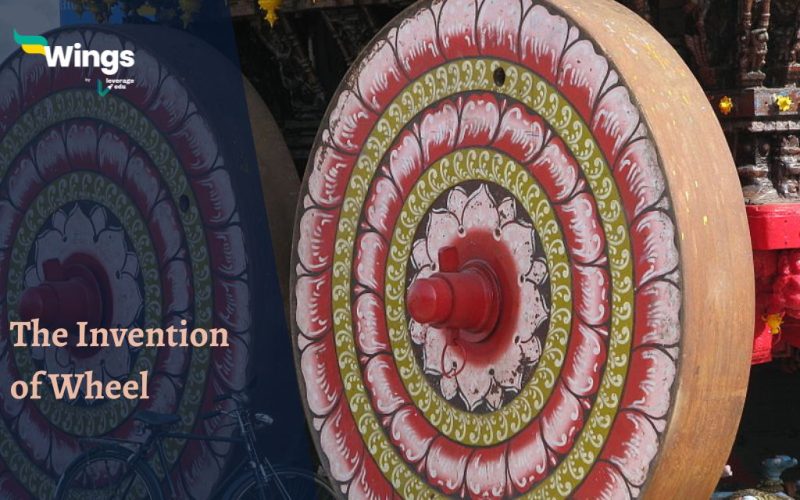A wheel is a circular component designed to rotate on an axle bearing. Wheels are integral to the wheel and axle system, one of the six simple machines. They enable easy movement, transportation, and load-bearing, and find use in various applications. Let us explore the facts surrounding the invention of the wheel.
The term “wheel” originates from the Old English “hwēol,” linked to Proto-Germanic and Proto-Indo-European words. Cognates in other languages include Icelandic “hjól,” Greek “κύκλος,” and Sanskrit “chakra,” all signifying “circle” or “wheel.”
Table of Contents [show]
History
The precise origin of the wheel remains uncertain. Early mentions attribute its invention to Mesopotamia, although recent theories suggest independent inventions in Eastern Europe. Evidence of early wheeled carts spans across regions, including the Middle East, Europe, India, and China. Notably, the potter’s wheel was invented during the Copper Age, around 4500–3300 BCE. The introduction of spoked wheels and chariots occurred in the Early Bronze Age (3300–2200 BCE). The solid wooden disk wheel dates back to the late Neolithic, with the earliest known example from around 3130 BCE.
Materials and Technology
Early wheels were typically simple wooden disks, sometimes cut from horizontal slices of tree trunks. Spoked wheels, a more recent invention, led to the creation of lighter and faster vehicles. The oldest surviving wooden spoked wheel was found in Ur, Iraq, dating to around 3100 BCE. Metal rims were added to wooden wheels during the 1st millennium BCE, improving durability.
Global Spread And Diverse Uses
Wheeled artifacts and toy cars are evidence of early wheeled movement in various parts of the world. Depictions of wheeled wagons appear in Mesopotamian tablet pictographs around 3500–3350 BCE. Europe, the South Caucasus, and Eastern Europe independently developed wheeled vehicles during the 4th millennium BCE. The diffusion of the wheel is believed to have occurred from the Near East to Europe around the mid-4th millennium BCE.
Must Read: First Nuclear Reactor In India: Find List of Nuclear Power Plants In India
Evolution Of Wheels
Evolution of Wheels happened in the following way:
- Wire-spoked wheels and pneumatic tires were invented in the 19th century, enhancing comfort and performance.
- Wire-spoked wheels offered stiffness and lightness, while alloy wheels are commonly used today.
- The wheel’s significance extends to various technologies like the water wheel, cogwheel, and turbine.
Mechanics And Function
Wheels reduce the work needed to move an object compared to dragging it, primarily due to reduced friction and rolling resistance. Rolling resistance depends on factors such as the ground, wheel material, tire inflation, and torque.
Construction
A wheel consists of several components, including the rim, hub, spokes, wire (in wire wheels), and tire (or tire). The rim forms the outer edge of the wheel and holds the tire. The hub is the wheel’s center and houses the bearing. Spokes radiate from the hub to the rim and provide structural support. Wire wheels use wire spokes to maintain rim stability. Tires are ring-shaped coverings that protect the wheel rim and enhance vehicle performance.
Symbolism
The wheel holds cultural and spiritual significance, representing cycles and repetition. It is seen in various symbols, such as the Kalachakra and the Dharmachakra.In modern usage, the invention of the wheel is a benchmark of early civilization’s technological progress.
The invention of the wheel, with its rich history and widespread use, has been a cornerstone of human progress, influencing transportation, technology, and culture throughout the ages.
Significance
The invention of the wheel, a crucial development in human history, brought about transformative changes. It emerged around 3500 BC in Mesopotamia and revolutionized transportation and technology. Wheels enabled the creation of wheeled vehicles, like chariots and carts, allowing for the efficient movement of goods and people. This innovation drastically reduced human effort, fostering agriculture, trade, and urbanization. It facilitated the construction of monumental structures and mechanical devices. The wheel’s importance extends beyond its practical applications, symbolizing human ingenuity and progress. It remains a timeless icon, reminding us of the profound impact technology has had on human civilization.
For more such interesting and informative topics, stay tuned to our General Knowledge section. If you want to know more about studying abroad, reach out to our experts on Leverage Edu!
 One app for all your study abroad needs
One app for all your study abroad needs















 45,000+ students trusted us with their dreams. Take the first step today!
45,000+ students trusted us with their dreams. Take the first step today!
